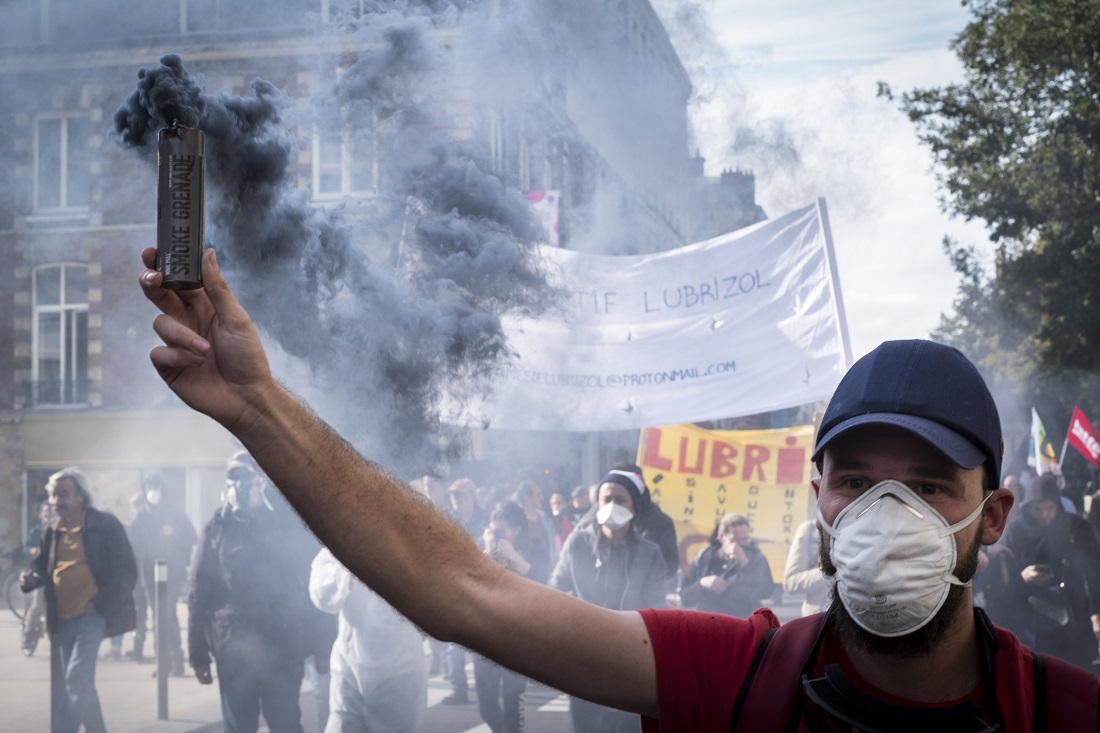
Environmental impact testing following a Sept. 26 fire at Lubrizol Corp.s plant in Rouen, France, has found no abnormal levels of contaminants in the area around the facility, but skeptical residents have demanded more transparency from the company and government officials.
Regional government agencies have conducted scores of tests checking chemical levels in air, rainwater, soil and food, and all have shown normal results. Meanwhile, protesters continue marching Rouens streets, complaining government has released too little information.
As late as Monday, officials for Prefect of Seine-Maritime – the regional government – again assured skeptical residents that the incident presented no serious threat to health.
A spreadsheet published by a Seine-Maritime agency shows approximately 5,253 metric tons of lubricant additives were stored in two Lubrizol warehouses that caught fire. Many of the products are highly toxic, combustible compounds, including polycyclic hydrocarbons, chlorinated solvents, benzene solvents, dioxins and furans, phthalates and polychlorinated biphenyls, according to the government.
During the fire and in the days following, residents reported sore throats, eye irritation and shortened breath.
On Monday, though, the regional government stated air test results were either below the measurable threshold, or below the regulatory values [of] posing a risk to human health.
Authorities tested three times for the presence of asbestos fibers in air because a roof that burned contained the substance, but all three showed fiber levels below five fibers per liter of air – the threshold that triggers requirements for abatement or containment.
The first 17 test samples for lead and dioxins showed the presence of dioxin – a highly toxic compound produced as a byproduct in some manufacturing processes – in all samples. The government said the fire probably released dioxins, which are found in electric cables and plastic. Authorities advised that further analyses are need to verify the levels and that testing will continue.
Seine-Maritime officials told residents that tap water did not represent a health risk, as it comes exclusively from groundwater. However, they implemented additional water quality monitoring on groundwater sources.
The fire occurred near a farming region, and residents have been advised against eating certain agriculture products that came to market after Sept. 26.
As a precautionary principle, all potentially exposed animals and plant products are withdrawn from sales, the government advised. Potentially exposed products should therefore not be placed on the market.
By Monday, 514 samples were taken of different products – milk, eggs, honey, fish and vegetables.
The restriction potentially affects more than 3,100 farms, the government said.
Photo: Robin Letellier/SIPA/Newscom
